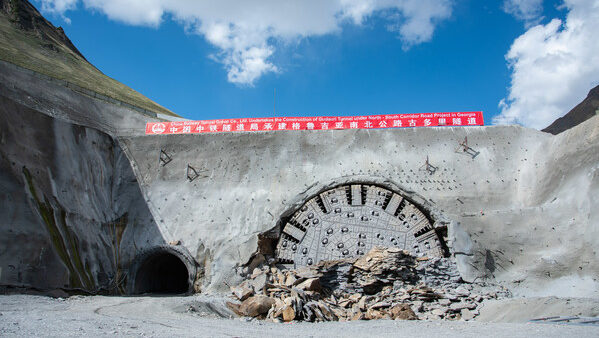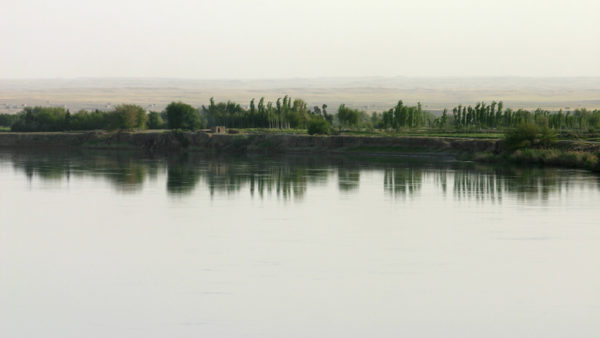The news that a third bolt has fallen from the new Leadenhall Building (popularly known as ‘The Cheesegrater’) in the City of London has caused consternation among those involved, coupled with a surge of interest what’s causing it.
This latest incident follows the similar failure of two bolts in November last year, just four months after the building was completed.
It’s very difficult to do non-destructive testing for bolts that might have tiny cracks because the nature of a bolt is that it has many tiny cracks built into it– Paul Lambert, technical director of Materials and Corrosion Engineering at Mott MacDonald
One of those events resulted in debris falling from the fifth storey to the pavement below and triggered an investigation by Laing O’Rourke, the main contractor on the scheme, and Arup, the structural engineer.
According to a statement released on 15 January by British Land, the joint developer of the 222m-high building, the failures never posed a threat to the structural soundness of the building, and it said a number of bolts, each of which is about as thick as a man’s arm, had been replaced, although it didn’t say how many.
The reason for the replacement was that they were suspected of suffering from "hydrogen embrittlement", a process that lowers the ductility of fasteners. This then raised the question among those observers who were not metallurgists, materials scientists or structural engineers as to what hydrogen embrittlement actually was.Â
The answer is that it is quite scary …Â
The nature of the problem
"Hydrogen embrittlement causes fear among engineers," says Paul Lambert, the technical director of Materials and Corrosion Engineering at Mott MacDonald, "because it attacks the fundamental reason for using steel in the first place."Â
It is also the subject of intense interest and controversy among the materials science community, owing to the competing theories of what is occurring at the atomic level.Â
That said, there is a consensus on the basic mechanism, which is that single atoms of hydrogen enter the steel, migrate through the crystal lattice, and are attracted to the areas of highest stress. Here they cause tiny fractures to propagate and, in a worst-case scenario, a cascading effect can take place, as the stress increases and attracts more free hydrogen, leading to a sudden catastrophic failure – such as the shearing of a bolt.Â
One of the unpleasant peculiarities of this process is that it particularly affects very hard steel developed for high stress uses. Lambert says: "The problem is well known and there are magic numbers – such as 320 Vickers HV – above which the risk of hydrogen embrittlement becomes greater. The first thing to ask is whether the hardness of your bolt is above that value, and if it is, you’d expect an engineer to take certain precautions."
It is well known that hydrogen can be introduced into steel by the use of acid, so it is advised that any plating or coating procedures using acid be avoided. It is also recommended that very hard steel components be "baked", at about the same temperature as a sponge cake. This drives incipient hydrogen out of the steel’s lattice. Â
"You have to know what you’re doing, because if you take the temperature too high for too long you can weaken the bolt," says Lambert, "but all of this is well known and it’s in the international standards, for example ISO 15330. You could argue that the problem is being aggravated by the fact that we have very fast production, delivery and use times, which means that the processing has to be very precise: if it’s done too quickly, you risk letting the hydrogen in and you may not be getting it out afterwards."Â
How easy is it to detect?
Before bolts of a certain hardness are used, they should be subjected to a "preloading test for the detection of hydrogen embrittlement", which is described in the international standard mentioned by Lambert.Â
Once they are in situ, testing becomes problematic. "It’s very difficult to do non-destructive testing for bolts that might have tiny cracks because the nature of a bolt is that it has many tiny cracks built into it anyhow, so unless you have a large one forming you’re not going to detect it," says Lambert.
"Inspection is easier with very large bolts if you can get to both ends. It’s hard to use radiography for all sort of practical reasons, so you’ll probably be using ultrasound, and it’s hard to get a good image. If you were to take them out you could use a combination of x-rays and ultrasound."
The job is an arduous one, because only about 5% of bolts are typically susceptible to hydrogen embrittlement. Lambert says: "If it were me, I’d try to find records on the sourcing of the bolts, because you might be able to isolate a bad batch."Â Â
The unforgiven
The obvious solution to the susceptibility of very hard steel to hydrogen embrittlement is to simply avoid using it in situations where failure might have serious consequences. Lambert, only perhaps half joking, says the fault lies with the aesthetic sensibilities of architects – if buildings were designed by engineers "they’d have whopping great bolts made from low strength steel".Â
Other than that, it seems that certain kinds of steel fasteners come with certain risks. Lambert says "Ferrous alloys have huge drawbacks – they are unstable and they corrode – but we tolerate that for very good reasons. They’re relatively cheap, we know how to do things with them – to form them, join them, bend them, and the third reason is they’re tough – they have ductility.Â
"The reasons that hydrogen embrittlement causes fear among engineers is because it risks undermining one of the fundamental reasons for using ferrous materials in the first place. If you have a steel ladder and an aluminium ladder, steel might rust and bend and you could see that. The aluminium ladder would be pristine right up until the point when it breaks with no warning whatever. It’s the ductility and forgivingness of steel that we like, so we get worried when this forgiving material with all its faults suddenly lets us down."Â
Photograph: The 47-storey Leadenhall Building (centre), popularly known as the Cheesegrater, was completed in July 2014 (Diego Delso/Wikimedia Commons)










